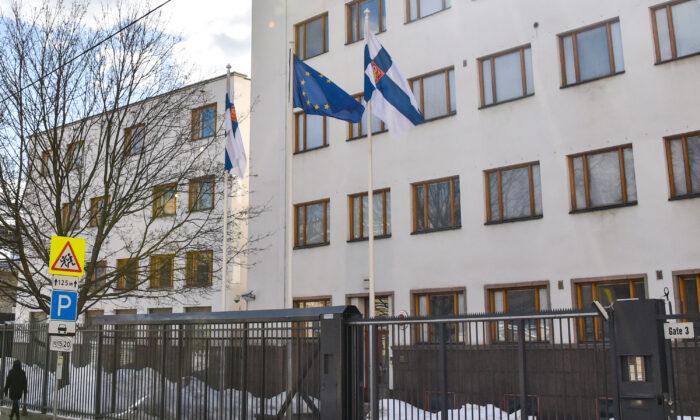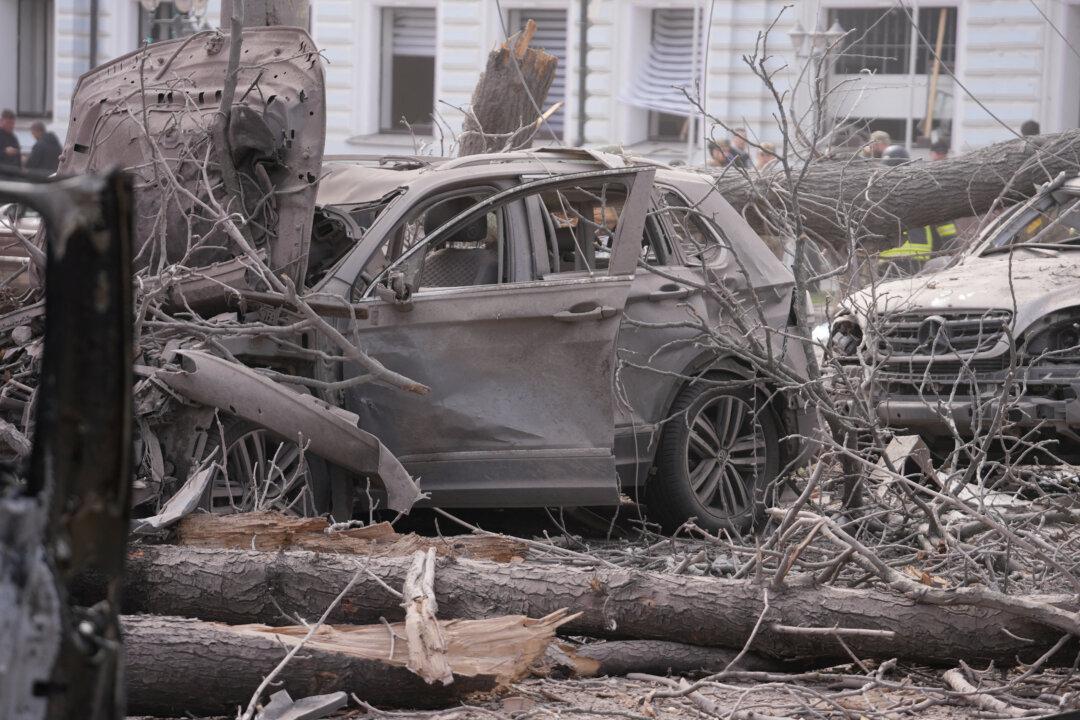A prospective defense agreement between the United States and Finland, which joined NATO earlier this year, will “pose a threat” to Russia, the Kremlin said on Dec. 15.
Kremlin spokesman Dmitry Peskov said the agreement would “undoubtedly” lead to increased tensions between Russia and neighboring Finland.
The pact, which will grant the U.S. military broad access to Finnish territory, is expected to be signed in Washington on Dec. 18.
According to Finnish officials, the agreement will grant the U.S. military speedy access to the Scandinavian country in the event of a conflict. It will also allow the U.S. military to conduct exercises on Finnish territory, they said.
“The fact that there will be no need to agree on everything separately [under the agreement] makes organizing peacetime operations easier,” Elina Valtonen, Finland’s foreign minister, told reporters on Dec. 14.
“Above all, it can be vital in a crisis.”
Under the agreement, the U.S. military will reportedly have unhindered access to 15 facilities and areas in Finland where it can store arms and equipment. These reportedly include four airbases, a military port, and railway access to northern Finland, where the U.S. military will maintain a storage area and a railway leading to the Russian border.
The United States has signed similar defense pacts with several other NATO members, including Bulgaria, the Czech Republic, Hungary, Norway, Poland, Slovakia, and the three Baltic states.
On Dec. 5, Sweden—which also is in line to join the Western alliance—signed a similar agreement with the United States. Once ratified, that pact will reportedly allow the U.S. military access to 17 areas inside Sweden, including airbases, a seaport, and other military facilities.
Finland officially joined NATO in April, becoming the Western alliance’s 31st member. The move, which ended Helsinki’s decades-long policy of neutrality, appears to have caused some consternation in Moscow.
The potential entry of NATO “military infrastructure” into neighboring Finland will “definitely pose a threat” to Russia, according to Mr. Peskov.
“We can only regret the move,” he said. “We used to have excellent relations with Finland.
“Neither of us threatened the other,” he added. “We didn’t infringe on each other’s interests, but rather demonstrated mutual respect.”

Border Closures
Finland, however, disputes those claims, accusing Moscow of weaponizing migrant inflows with the ultimate aim of destabilizing the country.According to Finnish officials, Russian authorities have intentionally pushed third-country migrants across the shared border in what they describe as a form of “hybrid warfare.”
“It’s clear these people [third-country migrants] are being transported to the border by Russian border guards,” Finnish Prime Minister Petteri Orpo said last month.
“It’s not a question of asylum-seekers,” he added. “It’s a question of hybrid attack and national security.”
Moscow rejects the claims.
“The crossings are used by those who have a legal right to cross the border,” Mr. Peskov said on Nov. 20. “Our border guards follow the relevant protocols.”
Nevertheless, in mid-November, Finland unilaterally closed its four southernmost border crossings with Russia. Days later, it closed three more.
On Nov. 29, Finland announced the closure of its last functioning crossing with Russia, effectively sealing the border between the two countries.
In a statement released the same day, the Russian foreign ministry confirmed that “all crossings along the Russia–Finland border will be closed.”
Following the unilateral border closure, the influx of illegal immigrants from Russia to Finland reportedly ground to a halt. However, migrant inflows resumed on Dec. 14, when Helsinki briefly reopened two of the eight crossings along the shared border.
According to Finnish border authorities, the move allowed roughly 200 illegal immigrants to enter from Russian territory.
“This is a sign that the Russian authorities are continuing their hybrid operation against Finland,” Finnish Interior Minister Mari Rantanen said on Dec. 14.
“This is something Finland will not tolerate.”
Ms. Rantanen went on to assert that the two crossings would, therefore, be reclosed for one month starting on Dec. 15.
On the same day, Russia’s TASS news agency reported that 270 people—including 120 foreign nationals—had used the two crossings to enter Finland on Dec. 14. It added, however, that 363 people—including 57 foreigners—had entered Russia from Finland over the same period.
The Epoch Times couldn’t independently verify the figures cited by TASS.
Finland shares a roughly 830-mile border with Russia. Running north to south, the border represents the northeastern frontier of the 27-member European Union, of which Finland has been a member since 1995.






